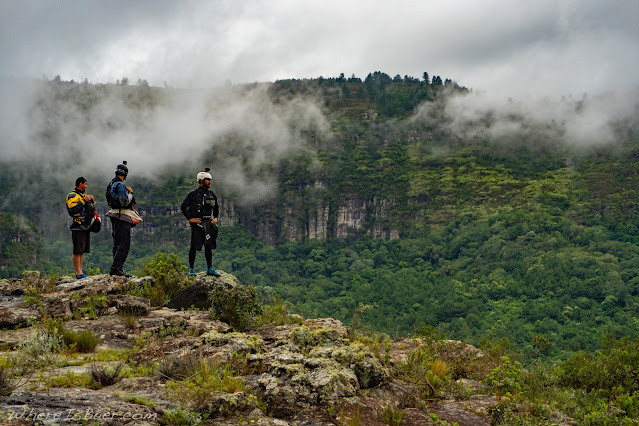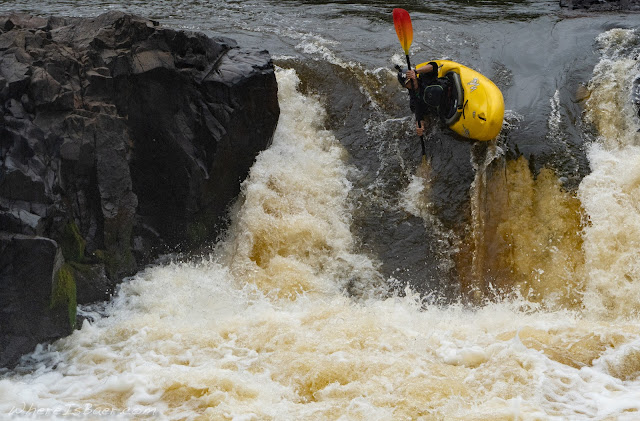Let me be blunt: Hard Core Paddles
are awesome. Their durability is solid, they have a ton of power, and
the company offers multiple options on customization. They are well
worth the price.
Last summer, I broke yet another Powerhouse.
Destroying paddles is something that I have normalized. Every year or
two I put myself in a situation that I stress a paddle beyond what it
can handle… and it breaks. I reached out to a handful of shops looking
for a replacement paddle – 4CRS, CKS, NRS, and even to Werner directly.
All of them were backordered. COVID-19 was impacting the supply chain
for everything from toilet paper to whitewater paddles.
I then
pondered other options. AT was discontinued years ago. I love Jimi Styx,
and have been using them for guiding rafts for years, but he’s
currently backordered until 2022, and he doesn’t do bent shafts. The
Euro paddles — Galasport, Double Dutch, and VE — all paddle well, but
again are hard to find stateside. Whitewater Technologies is a new
company that I’m excited to check out, but they are still in the
construction phase. Coran’s updated Seven Two isn’t my style. Accent
looks alright, but are known to have a heavy flutter. I was drawing a
blank.
Then I remembered years ago, while paddling the Tumwater
section of the Wenatchee, that I bumped into Andy and Mike Nash. They
were passing out prototypes of a new paddle and talking up the fact that
it had a wood shaft, a “Hard Core” (still sounds like an ‘80’s rock
band to me). It looked interesting, but the round blades looked a bit
small and we were about to put on at significant spring flows. That day,
I missed a great opportunity due to my ignorance of paddle physics.
Years passed and I wondered what Hard Core Paddles was up to now. Their website
is simple yet full of solid information. I liked what I saw, but I
wanted more info, so I reached out with a generic instant message. Later
that day, my phone rang. Mike (who physically builds the paddles) was
on the other end. We chatted for over an hour, talking through some of
my concerns and presenting me with insight into the paddle design. I
took a chance, ordered one, and immediately took it to Brazil for a
three-month test drive.

Here are some of my initial questions, and resulting personal experiences, after swinging a Hard Core paddle for three-months.
What if I just don’t like it? They have a satisfaction guarantee. Hell, they’ll even cover the return postage.
Durability? After
three months of river abuse, and a ton of bouncing around in the cargo
bay of multiple planes, busses, pickup trucks, and being used as a tarp
pole, my paddle showed very limited wear. Yes there is superficial
scratching, but it wasn’t shrinking like a fiberglass Werner.
Power? The
blade is relatively round and the surface area is about 40 cm² less
than my old standard Powerhouse. The blade shape shares a classic River
Styx style. This all initially concerned me. I like a powerful blade and
these seemed like old school designs and techniques. Mike dropped a
knowledge bomb on me here and started talking about dihedrals. Most
aggressively shaped paddles need a fairly aggressive dihedral to
eliminate paddle flutter, hence losing a large percentage of their
power. A balanced, rounder, paddle blade doesn’t flutter nearly as much
and you can limit the dihedral. This effectively gives you more powerful
pull in a smaller blade size. If that is all a bit nerdy for you, just
know there is a ton of power in these mid-sized round blades.
Paddle Length vs Grip Width? As
bent shaft paddles get longer, the grip width gets wider; the idea is
that a bigger person would want a longer paddle and a wider grip. This
ratio of grip width to paddle length has become dated. The modern creek
boat has a significantly larger volume than it did 20 years ago. These
larger boats have created a demand for a longer paddle to help control
them. Hard Core has thought about this, and rescaled their ratio for
paddle length to grip width. This allows you to bump up three to six
centimeters in paddle length and keep your familiar grip width.
Flex? It’s
a carbon paddle, it feels pretty darn stiff. The wood core does manage
to shine through here and work its magic. The wood’s natural flex
patterns elongate the power transfer, just a bit, making the joints feel
better after a long week. The wood core also means that they retain
warmth much better on those really frigid days.
Lead Time? Average delivery time is under a week from order.
Human Factor? Your paddle is built by Mike Nash out of his “garage” in Gold Bar, Washington.
Price?
$440 It’s more than many other fiberglass models out there but it fits
right in with any of the other high end carbon paddles on the market.
If
you’re in the market for a solid, powerful paddle, Hard Core is making
them, locally, and at a fair price. And mention this article for $15
bucks back on your purchase.
www.hardcorepaddles.com









